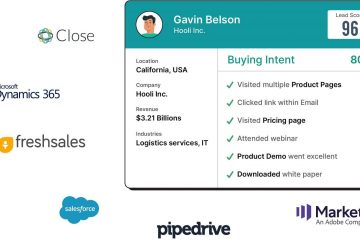Automation In Account-Based Marketing (ABM)
Marketing today is all about getting the right message to the right person at the right time, and Account-Based Marketing (ABM) is a tried-and-tested methodology to drive the acquisition of high-value customers through account-tailored approaches. With ABM, instead of businesses using a traditional “spray and pray” approach to acquire customers, they select target accounts first and then execute their sales and marketing campaigns to acquire them.
In fact, companies that have implemented ABM have reported a 208% increase in revenue from the alignment of marketing, sales, and business initiatives.
This is why more and more organizations are adopting ABM strategies. 43% of businesses are already in early adoption stages, while 13% have fully integrated ABM into their marketing and sales processes, according to a study by Terminus.
While there is no question about the effectiveness of an ABM campaign, it can be time-consuming and labor-intensive, especially when your sales pipeline is scaling with new target accounts every day. This is where automation comes in.
Automation tools and technologies streamline ABM efforts for businesses by elevating the efficiency of repetitive tasks, such as sending emails or scheduling meetings, improving the accuracy and consistency of data being collected from target accounts, and enhancing scalability and collaboration while simultaneously saving time and other resources. In this blog, we will highlight the importance of automation in account-based marketing, walk you through the steps of automating account-based marketing for your business, and even provide you a list of five tools that can help you with ABM automation.
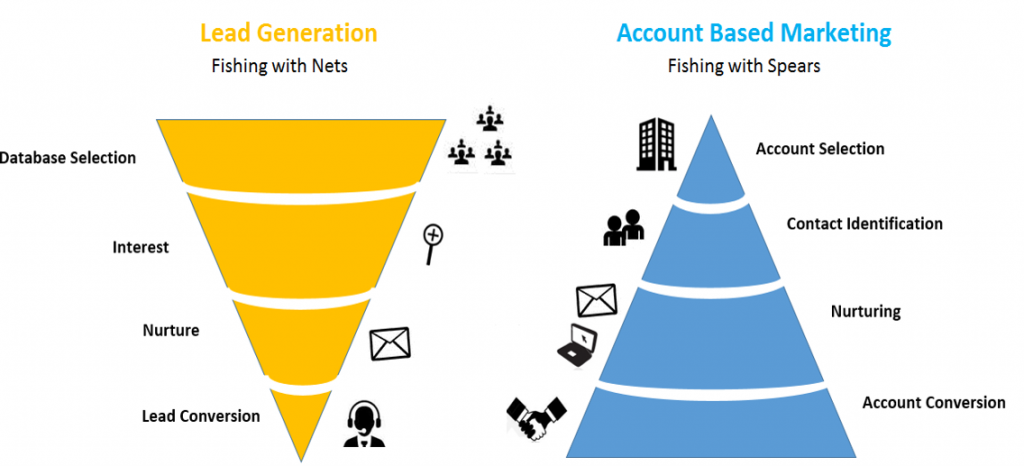
Why Automation in Account-Based Marketing?
Let’s dive into ABM automation benefits in detail:
- Improved Scalability: Every growing business needs to scale their operations and relying on automation technology to scale ABM efforts enables your marketing and sales teams to reach out to a larger number of target accounts without dedicating an increased amount of resources to it. Moreover, it frees up time for people directly involved in the sales cycle to focus on lead nurturing, idea generation, improving target ICP, and other important tasks that will increase your ABM efficiency.
- Better Marketing and Sales Alignment: Most businesses expect their marketing and sales teams to get along without any hassle, but that’s not usually the case — and for account-based marketing initiatives, it is not a luxury but a necessity. Automation helps these two teams collaborate, see each other’s progresses through automated reporting and real-time data sync, and stay aligned on the goals of the ABM campaign.
- Shorter Sales Cycle: Reducing the workload of repetitive tasks for marketing and sales teams enables them to make the sales cycles faster. Shorter sales cycles mean more conversions.It is not just the sales cycle though; ABM automation also shaves time off the content production cycle. Most tech allows you to hook up your prospects’ information and then makes it much more easier to do account specific personalization.
- Greater Customer Retention: As your operations scale, your marketing and sales teams will eventually find it difficult to maintain the same degree of personalization for every target account in an ABM campaign.By processing data far more quickly and accurately, ABM automation tools eliminate the scaling issue. You can continue to deliver highly relevant content even as your target account list expands, protecting and fostering the relationships you have worked so hard to establish with prospects. This ultimately improves customer satisfaction and retention.
- Increased Impact and Reduced Risk of Losing High-Intent Leads: With the time your marketing and sales teams save by not doing repetitive tasks for each target account, they can focus more of their resources on developing more creative and effective ABM initiatives. You may improve your messaging by doing a more thorough examination of your prospects using intent data.Streamlining the ABM process with automation also ensures that all leads in the sales cycle are paid attention to, leading to a lesser number of high-intent leads slipping through the net. Automation software (like Salespanel) can notify you when a prospect checks out your pricing page, for example, or when other events occur that point to their being prepared for a chat. Owing to this, your sales team can move quickly to ensure that they connect with prospects while they are available.
In this next section, we will check out how you can integrate automation in various stages of your ABM process.
Automating Tasks in Various Stages of ABM — How Does it Work?
The implementation of ABM automation may require some time, but once it’s up and running, you will save a significant amount of resources. Here is a step-by-step guide to ensure a smooth and effective transition to automating your ABM workflows:
1. Create Your Ideal Customer Profile (ICP) and Define Your Customer Journey
Before you implement ABM automation, it is necessary to define your ideal customer profile (ICP). This is comparable to a buyer persona, except it is designed to target entire companies as opposed to specific people. For instance, your ICP must include the size, income, industry, and location of your business. Once you create your ICP, you can implement ABM automation to segment and qualify leads in your pipeline on autopilot.
You also need to define the steps each lead will take in your sales cycle as they move towards becoming a paying customer. This could start from simply visiting your website and proceed to checking out certain webpages (product, pricing, etc.), signing up to your newsletter, or downloading a case study. This will further help you refine messaging for each individual target account, positioning your offerings as the best solution to resolve their pain points and convince them to invest in your brand.
2. Integrate Your ABM software with Other Marketing Automation Tools and Your CRM
The quality of the IT infrastructure supporting ABM automation is directly related to it. The recipe for an excellent ABM toolset does not exist. Whenever you make a purchase, you should take the goals of your ABM team and the business into account. However, a safe option would be to use some combination of automation software, ABM software, and CRM.
By connecting these, you can easily scale ABM and receive a unified picture of your ABM landscape. Integrating your ABM software with marketing automation tools for email marketing or ads allows you to automate steps in your email outreach and ad campaigns, respectively. Furthermore, it will be hard to track the return on investment of an account-based campaign and determine whether leads turn into accounts, if your ABM software does not communicate with your CRM. By connecting these products, you will have your CRM, target accounts, content, and ICP research all in one location.
3. Build Your ABM Campaigns
Once you have identified your target audience, the type of content they enjoy, and have selected an ABM automation platform and content creation platform, it is time to start building your personalized ABM campaigns for separate target accounts.
Like any other marketing campaign, you need to create content with your ICP in mind, incorporate messaging that addresses the primary pain points of target accounts, and then, mass-personalize your content for each unique account. You also need to identify which channels you want your ABM campaign to go live on, and what workflows triggered. You can create a messaging workflow for a sales rep once a lead has visited the pricing page on your website, for example.
4. Optimize Content and Tailor Your Engagement
The sole purpose of your ABM campaign is to target the right prospects with the right content, thereby, optimize your content based on your ICP, in a way that best positions your products or services as the primary solution to their problems.
Another facet of your ABM strategy should be working with your sales team to customize their interactions with target accounts. Using automation tools is a fantastic method to accomplish this. For this reason, your ABM and CRM software must integrate. However, it is recommended that you prioritize personalized content and sales outreach, even if you are automating it.
5. Analyzing and Monitoring Performance
The last step in creating an effective ABM strategy is to make sure that you are monitoring its performance. Using data and analytics, you can see what’s working well, where you can make improvements, which accounts have been converted, and more. Teams may simply monitor progress by using automation to integrate these insights into reports and dashboards. This saves them time while planning their next move rather than attempting to interpret unprocessed data. Features that you can look for in your ABM toolset include scoring (which assigns target accounts a score based on their website behavior, buying intent, needs, budget, and more) and A/B testing (which enables marketing teams to test out messaging and see what works best with the particular ICP).
Finally, let’s see which are the top five ABM automation software of 2023.
Top 5 ABM Automation Software of 2023
Here are the five best ABM software of 2023:
1. HubSpot
HubSpot’s ABM software is not a standalone tool; it integrates seamlessly with the HubSpot Marketing and Sales Professional solutions. This makes it easy for HubSpot users to manage everything from one system.
You can create an ideal client profile, or ICP, within your CRM. HubSpot will automatically rank prospects according to how well they match your profile with the use of this ICP. You can also import a spreadsheet of your target accounts manually and leverage Marketing Hub tools to personalize your messaging for webpages, ads, and social media posts.
In addition to strong automation capabilities, HubSpot offers some amazing personalization options to enhance the appeal of your communications to specific accounts, and a plethora of tools to assist you in managing inbound marketing campaigns in conjunction with your ABM approach are also included. HubSpot is the best all-in-one platform for sales, marketing, and account-based marketing.

2. Salespanel
Salespanel offers a robust ABM engine that helps marketers and salespeople target high-value accounts and create personalized experiences throughout the entire customer journey. With this software you can adopt a strategy that starts influencing your target accounts as soon as they land on your website. You can qualify in real-time, personalize the experience of decision makers, and move deals forward at a higher pace.
As leads move through the various steps of the sales funnel, you may qualify them from your website and send them emails or relevant material on social media. You can also transfer high-value accounts from Salespanel to different advertising platforms and run campaigns specifically for each ICP. You can also create lookalike audiences on high-engagement platforms like Facebook. Moreover, you can present your leads with relevant re-targeting advertisements on various ad networks, such as Google, Facebook, LinkedIn, and so on.
Besides this, Salespanel also allows you to score and rate your leads using marketing and intent data. When target prospects demonstrate a desire to buy or meet sales requirements, you can build a workflow that allows sales representatives to be informed. Lastly, Salespanel is compatible with your current acquisition approach and facilitates real-time data sharing between marketing and sales.

3. Triblio
Triblio is an adaptable account-based marketing platform that supports the implementation of ABM campaigns using all available channels. In addition to this, it has a tonne of amazing features for dynamic email campaigns, CTA offer customization, and online personalization.
As you would expect from any ABM platform, the prospecting capabilities on the platform assist you in finding new prospects and locating decision-makers at your target organizations. Triblio goes above and above with its solutions, mostly through personalization, to transform prospect data into relevant marketing.
You may add dynamic call-to-actions (CTAs) to blog posts, automate customized email campaigns to send pertinent messages, and personalize site content for specific visitors, using Triblio’s features. While these tasks are otherwise possible with specialized email marketing and personalization software, Triblio enables you to accomplish everything from a single piece of software. Furthermore, via their dashboard, your marketers can determine the ideal moment to contact an account based on the platform’s capacity to examine industry-specific online behavior. You can also target larger accounts and directly address their concerns from your dashboard by using the software’s one-to-one account marketing setup.
Triblio also leverages AI for account identification, purchase intent detection, and sales orchestration. Multi-channel campaigns can be triggered by account activities, purchase intent, campaign results or priority accounts. Lastly, you can also activate outbound sales workflows that align with marketing campaigns and buyer interest.
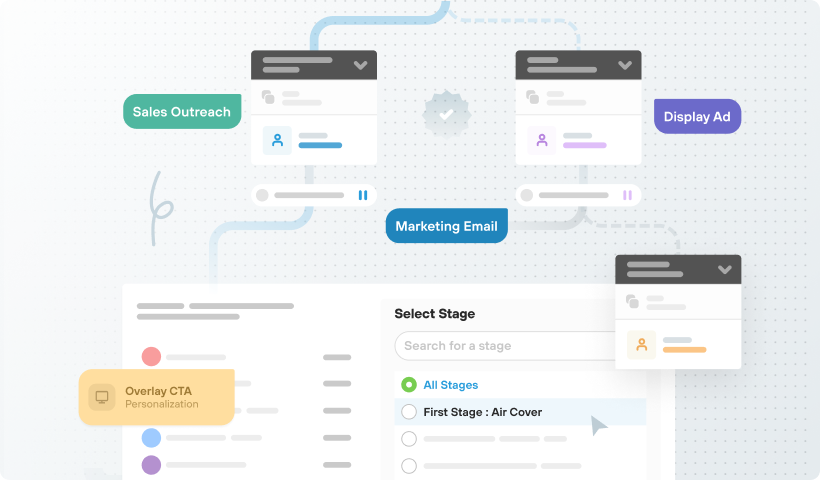
4. Rollworks
Rollworks is a specialized account-based marketing platform that can be used to handle paid advertising campaigns. Using integrated analytics and reporting, the platform assists you in locating high-value prospects, engaging them with tailored advertising campaigns, and tracking outcomes.
Additionally, audience matching on RollWorks is remarkably accurate, in part because of the wide range of targeting choices available to you; yet, excellent data quality is a pre-requisite.
You can also conduct cross-channel campaigns using RollWorks. In such cases, the software evaluates the effectiveness of such efforts and provides you important data regarding their influence. Other notable features of this software include lead identification based on designated ICPs, account-scoring with a predictive model built on machine-learning technology, new account suggestions from its in-built B2B database, buyer intent detection based on content consumption behavior, and analytics measuring the success of your ABM campaigns at both account and contact levels.
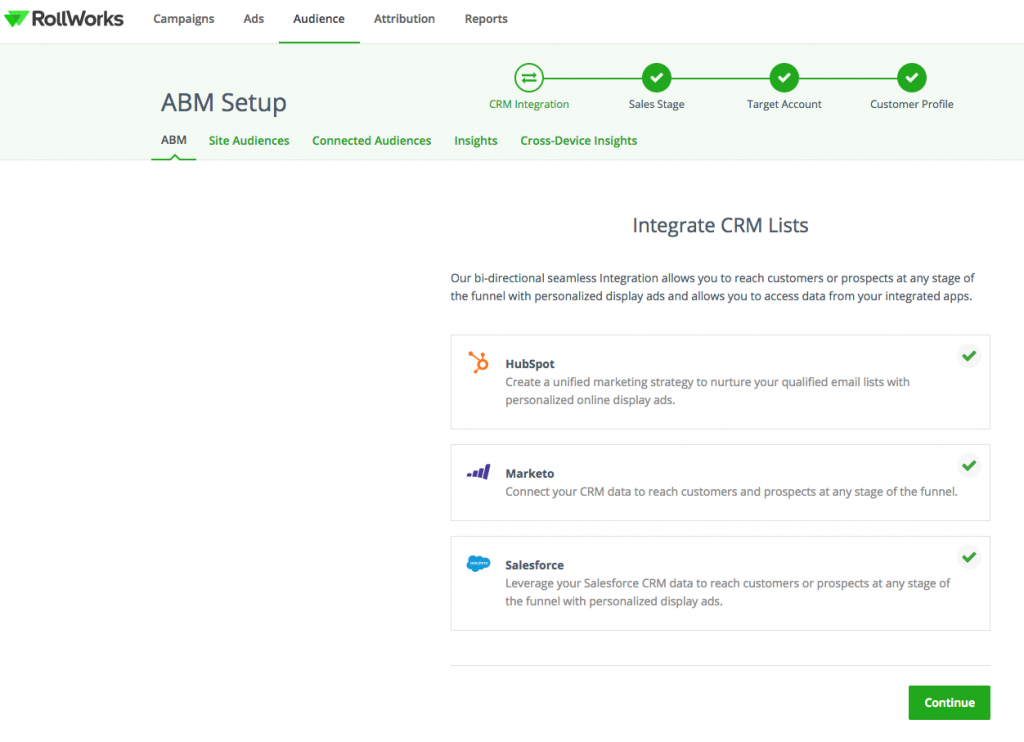
5. Leadiro (now Klarity)
Leadiro (now Klarity) is an ABM software that specifically caters to small businesses. It is a B2B customer data platform that facilitates direct communication between major decision makers in a company and their business partners. The software offers segmentation features to help users group those prospects into lists and uses demographic profiles to assist users in identifying their ideal prospects.
Notable features of Leadiro include its 59 million plus B2B contact database which presents you with target accounts matching your ICP in minutes, a proprietary contact validity score (CVS) algorithm that scores all account data, advanced filters for firmographic and demographic profiling, and a 108+ country geographical reach for identifying and targeting ideal prospects worldwide.
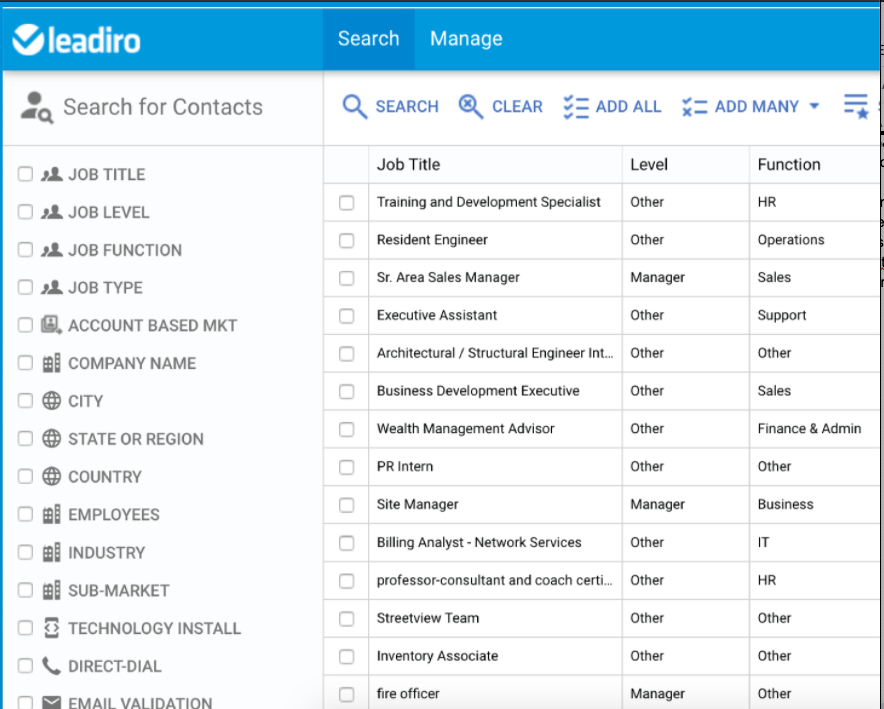
Final Thoughts
Account-based marketing is a focused marketing strategy that uses customized campaigns to target high-value accounts. The processes of developing and implementing these initiatives, as well as monitoring and evaluating their effectiveness, can be made more efficient with the use of automation. Using the right automation software can help your marketing and sales teams save a lot of time and effort while generating positive interactions with your target accounts.
If you are looking for a tool, Salespanel can help marketing teams identify high-value prospects and target them with personalized messaging on autopilot, thanks to its robust integrations with CRMs and advertising platforms. Moreover, its de-anonymization feature gives marketers a complete view of website visitors even before they sign up and continues to track accounts throughout the customer journey.
Sell more, understand your customers’ journey for free!
Sales and Marketing teams spend millions of dollars to bring visitors to your website. But do you track your customer’s journey? Do you know who buys and why?
Around 8% of your website traffic will sign up on your lead forms. What happens to the other 92% of your traffic? Can you identify your visiting accounts? Can you engage and retarget your qualified visitors even if they are not identified?
